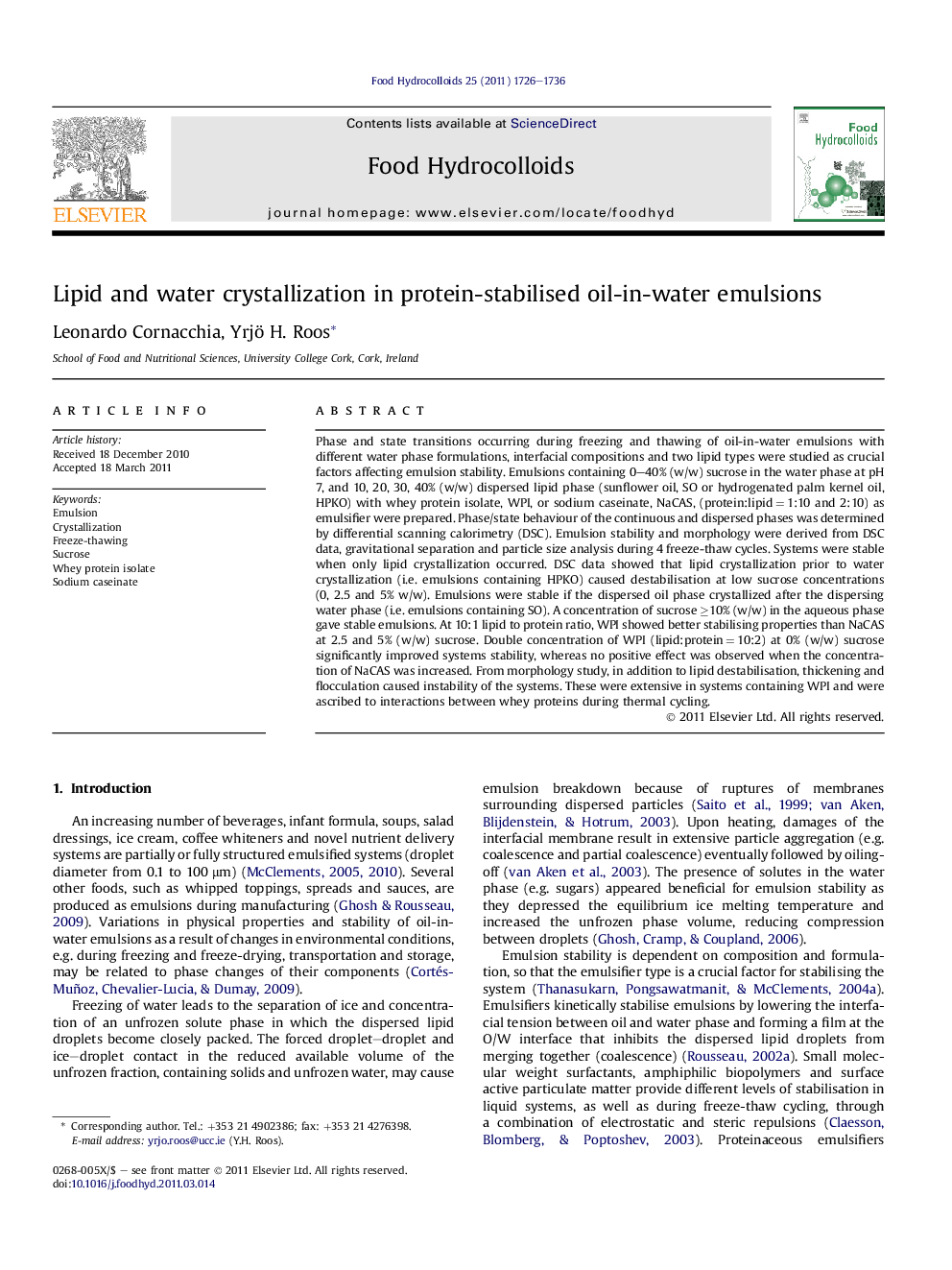| Article ID | Journal | Published Year | Pages | File Type |
|---|---|---|---|---|
| 605086 | Food Hydrocolloids | 2011 | 11 Pages |
Phase and state transitions occurring during freezing and thawing of oil-in-water emulsions with different water phase formulations, interfacial compositions and two lipid types were studied as crucial factors affecting emulsion stability. Emulsions containing 0–40% (w/w) sucrose in the water phase at pH 7, and 10, 20, 30, 40% (w/w) dispersed lipid phase (sunflower oil, SO or hydrogenated palm kernel oil, HPKO) with whey protein isolate, WPI, or sodium caseinate, NaCAS, (protein:lipid = 1:10 and 2:10) as emulsifier were prepared. Phase/state behaviour of the continuous and dispersed phases was determined by differential scanning calorimetry (DSC). Emulsion stability and morphology were derived from DSC data, gravitational separation and particle size analysis during 4 freeze-thaw cycles. Systems were stable when only lipid crystallization occurred. DSC data showed that lipid crystallization prior to water crystallization (i.e. emulsions containing HPKO) caused destabilisation at low sucrose concentrations (0, 2.5 and 5% w/w). Emulsions were stable if the dispersed oil phase crystallized after the dispersing water phase (i.e. emulsions containing SO). A concentration of sucrose ≥10% (w/w) in the aqueous phase gave stable emulsions. At 10:1 lipid to protein ratio, WPI showed better stabilising properties than NaCAS at 2.5 and 5% (w/w) sucrose. Double concentration of WPI (lipid:protein = 10:2) at 0% (w/w) sucrose significantly improved systems stability, whereas no positive effect was observed when the concentration of NaCAS was increased. From morphology study, in addition to lipid destabilisation, thickening and flocculation caused instability of the systems. These were extensive in systems containing WPI and were ascribed to interactions between whey proteins during thermal cycling.
Graphical abstractFigure optionsDownload full-size imageDownload as PowerPoint slide
